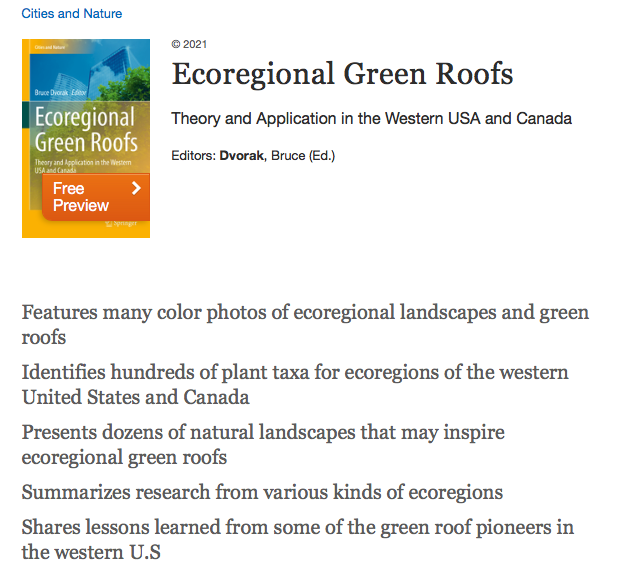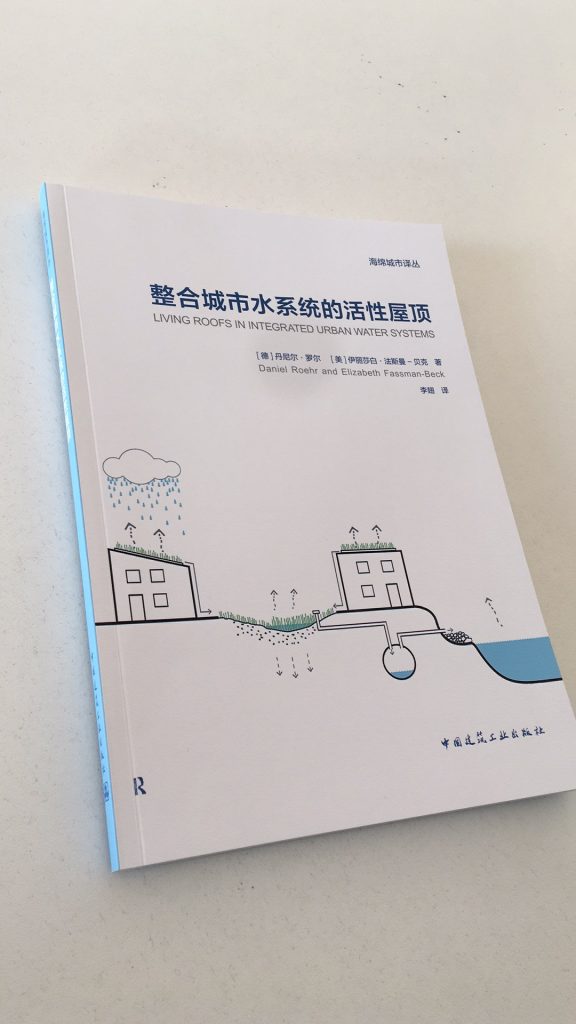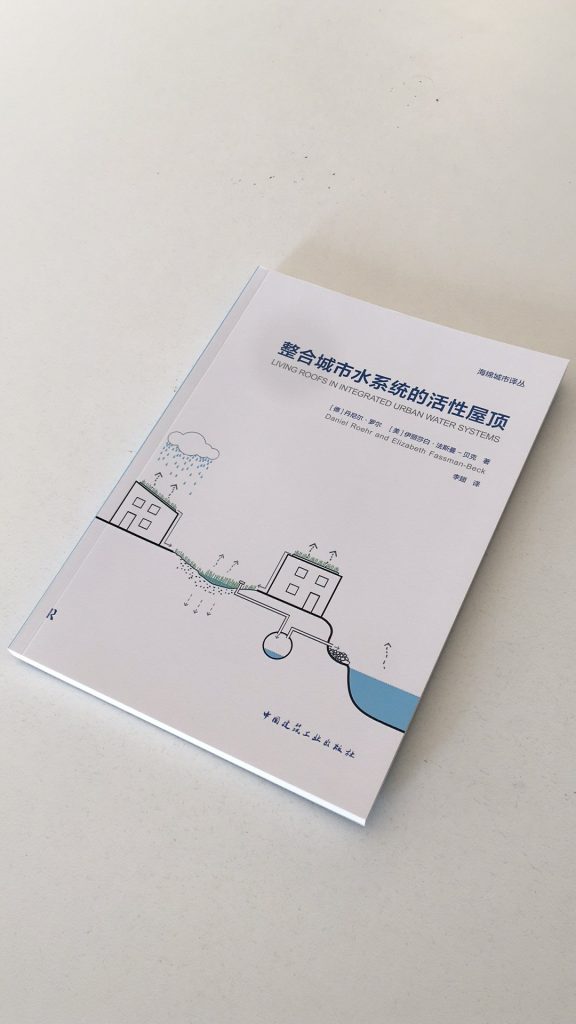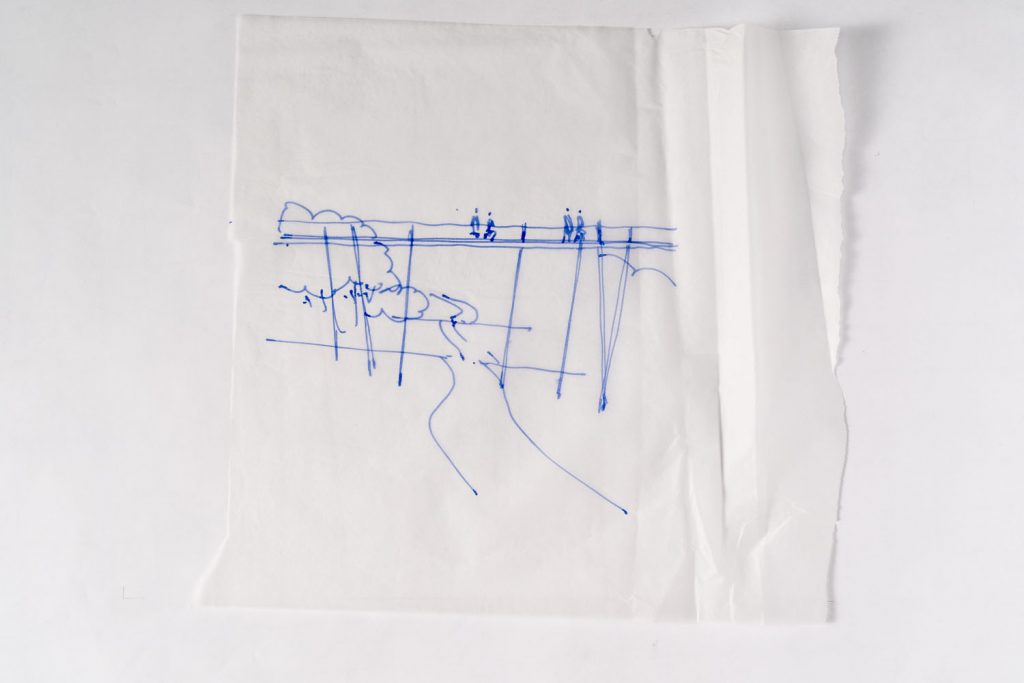Edited by Bruce D Dvorak and co-authored by eight authors including a chapter by Bruce D Dvorak and Daniel Roehr
“Green Roofs in Fraser Lowland and Vancouver Island Ecoregions”
This chapter presents case studies of four conservation sites and seven green roofs located in western British Columbia in the ecoregions of the Fraser Lowlands and Vancouver Island. The region is geographically complex with remnants of forested, savanna, and grassland ecoregions that once populated the Fraser River delta and parts of Vancouver Island. Historically, prairie and savanna vegetation dominated the ground plain on the delta. Less than 25% of the original temperate forests remain intact, and only a few small preserves sustain the endangered native grassland habitats that were once widespread on the southeastern edge of Vancouver Island and the delta. Annual precipitation at Victoria averages about 600 mm, Nanaimo averages about 1000 mm and Vancouver 1190 mm. Much of the precipitation takes place during the fall, winter, and spring, as summers are cool and dry. This chapter highlights how 42 plant taxa native to the region have been trialed on seven ecoregional green roofs.
BOOK INFO
This book studies the application of green roofs in ecoregions of the western United States and Canada. While green roofs were intended to sustain local or regional vegetation, this volume describes how green roofs in their modern form are typically planted with a low-diversity mix of sedums from Europe or Asia. The authors demonstrate how in the western USA and Canada many green roofs have been designed with native plants and have been found to thrive.
Part I of this book covers theory and an overview of ecoregions and their implications for green roofs. In Part II vegetation from prairies, deserts, montane meadows, coastal meadows, and scrub and sub-alpine habitats are explored on seventy-three ecoregional green roofs. Case studies explore design concepts, materials, watering and maintenance, wildlife, plant species, and lessons learned. Part III covers an overview of ecoregional green roofs and a future outlook.
This book is aimed at professionals, designers, researchers, students and educators with an interest in green roofs and the preservation of biodiversity.
Springer Nature
https://www.springer.com/us/book/9783030583941
https://link.springer.com/book/10.1007%2F978-3-030-58395-8
DOI 10.1007/978-3-030-58395-8
eBook ISBN 978-3-030-58395-8
Hard cover ISBN 978-3-030-58395-8









